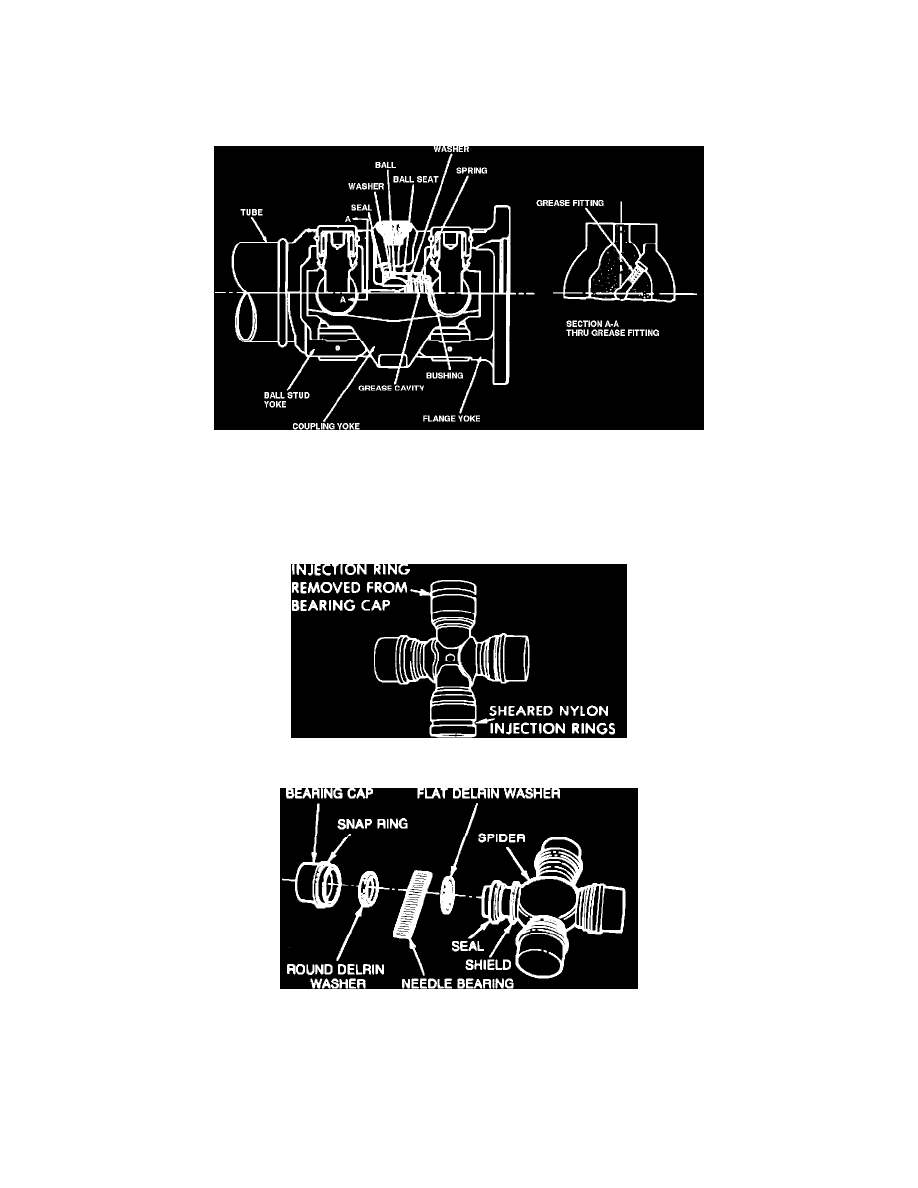K 2500 Truck 4WD V8-379 6.2L DSL VIN C FI (1989)

Universal Joint: Service and Repair
Constant Velocity Type
Disassembly and Assembly
Fig. 10 Constant Velocity (CV) Universal Joint
This type of universal joint, Fig. 10, consists of two conventional cross and roller joints connected with a special link yoke. Because the two joint
angles are the same, even though the usual universal joint fluctuation is present within the unit, the acceleration of the front joint (within the yoke) is
always neutralized by the deceleration of the rear joint (within the yoke) and vice versa. The end result is the front and rear propeller shafts always turn
at a constant velocity.
Fig. 1 Production Type Universal Joints Which Use Nylon Injection Rings In Place Of Snap Rings
Fig. 2 Service Type Universal Joints (Internal Snap Ring Type)
Before disassembling any universal joint, examine the assembly carefully and note the position of the grease fitting (if used). Also, be sure to mark the
yokes with relation to the propeller shaft so they may be reassembled in the same relative position. Failure to observe these precautions may produce
rough vehicle operation which results in rapid wear and failure of parts, and place an unbalanced load on transmission, engine and rear axle.
When universal joints are disassembled for lubrication or inspection, and the old parts are to be reinstalled, special care must be exercised to avoid
damage to universal joint spider or cross and bearing cups.
Some driveshafts use an injected nylon retainer to hold the bearing cups. When service is necessary, pressing the cups out will sheer the nylon retainer,
